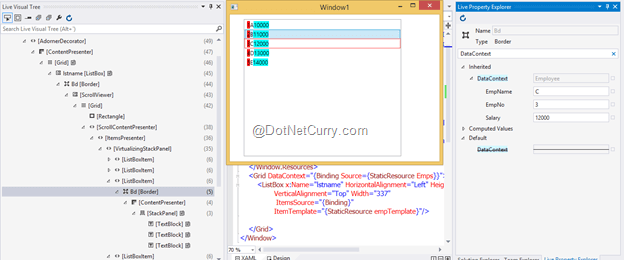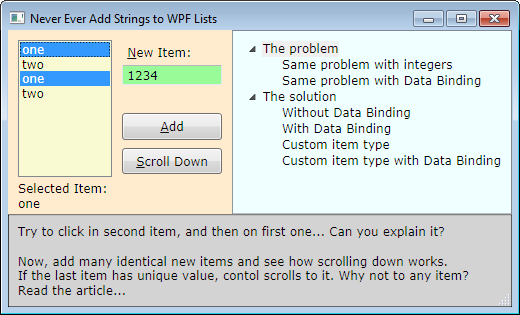

After some more googling I found that I had to add another namespace and a ignore property to the mix: xmlns:mc="" The property ‘DataContext’ must be in the default namespace or in the element namespace ‘’. Instead of compiling it was throwing this error at me: Thanks to this language service and based on customer requests, in Visual Studio 2015 we have pivoted Blend to focus more on being a design-oriented tool for XAML developers. That is supposed to work, but it doesn’t (I have a simple class Tubo with a single property Xul in local namespace). On the docket are features such as cross language refactoring operations, improved IntelliSense filtering, and better data binding IntelliSense. Then I tried applying a d:DataContext to the first element on the default window template – Grid, like: In face, it is not exactly easy to find the proper declaration.Īfter some googling around I have found this declaration: xmlns:d="" In addition, we cover the new C and Visual Basic language enhancement for the 2016 and the.

This includes a tour of using the IDE to build various types of applications. But what article fails to mention is how does one get that mystical d namespace. The chapters in this part provide an overview of what to expect from Visual Studio 2015. The improvement is described in this blog post. One of the better improvements in Visual Studio 2013 is IntelliSense for data binding in XAML editor. And Blend application sparks to life again. Just remove it (in both projects) and reference the proper version. Not sure what triggered the referencing of the wrong version but the solution is quite simple. Somehow Blend added a reference to a version 4.0.5.0. After playing around I discovered that the problem is with the referenced assembly. It will underline pi:NavigateToScreenAction with a red squiggle as well complaining that type NavigateToScreenAction from assembly is built with an older version of the Blend SDK, and it is not supported in Silverlight 5 projects.Ī puzzling error. Blend will add a navigational behavior, like:

Right click on that button and select Navigate To/Screen 2. Recently I’ve stumbled into an curios error when adding interactivity to a button.Ĭreate two screens, and a button on a screen. I am playing with Blend 2013 Silverlight Sketchflow for creating web application mockups.


 0 kommentar(er)
0 kommentar(er)
